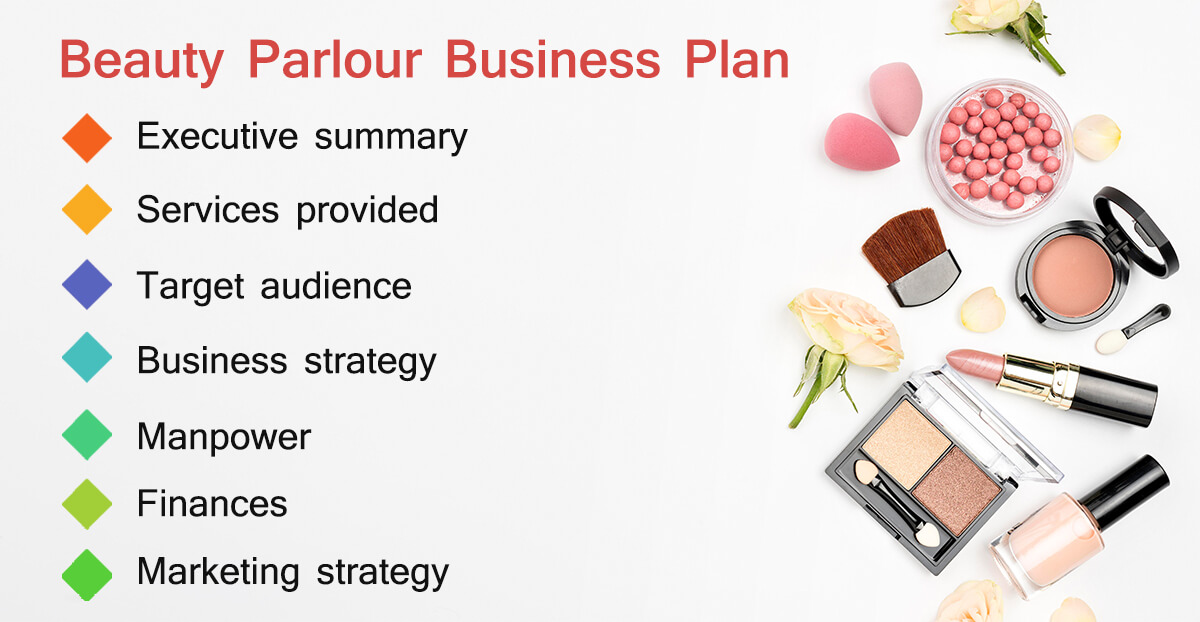Beauty parlour business plan: Crafting a Successful Beauty Parlour Business Plan: A Step-by-Step Guide. Creating an effective beauty parlour business plan is crucial for the success of your venture. Here are some tips to help you get the best out of your beauty parlour business plan:

1. The Background:
The beauty industry has witnessed exponential growth in recent years, with an increasing number of individuals seeking professional grooming services. Starting a beauty parlour can be a rewarding venture, but like any business, careful planning is essential for success. A well-thought-out business plan serves as a roadmap for your beauty parlour, helping you navigate challenges and capitalize on opportunities.
2. Executive Summary:
Begin your business plan with a concise executive summary. Highlight your vision, mission, and the unique selling points of your beauty parlour. Discuss your target market, location, and the range of services you plan to offer. Include key financial projections, such as initial investment requirements and expected revenue.
3. Business Description:
Provide a detailed description of your beauty parlour. Explain the types of services you will offer, such as hair styling, skincare, makeup, and other beauty treatments. Define your target market, specifying demographics and psychographics. Discuss the trends and opportunities in the beauty industry that your parlour aims to capitalize on.
4. Market Analysis:
Conduct a thorough market analysis to understand your competition, target audience, and industry trends. Identify your competitors and analyze their strengths and weaknesses. Assess the demand for beauty services in your location and outline your competitive advantage. Include a SWOT analysis to understand your parlour’s internal strengths and weaknesses and external opportunities and threats.
5. Organization and Management:
Detail the organizational structure of your beauty parlour. Define the roles and responsibilities of key team members, including stylists, estheticians, and support staff. Highlight the qualifications and experience of your management team. Discuss your hiring strategy and plans for staff training and development.
6. Services and Pricing:
Outline the services your beauty parlour will offer, including hairstyling, skincare, makeup, and any additional services. Define your pricing strategy, considering factors such as market rates, competitor pricing, and the perceived value of your services. Clearly communicate any promotions or package deals you plan to offer to attract and retain customers.
7. Marketing and Sales Strategy:
Develop a comprehensive marketing and sales strategy to promote your beauty parlour. Utilize both online and offline channels, including social media, local advertising, and partnerships with other businesses. Detail your approach to customer retention and referral programs. Consider offering introductory discounts or loyalty programs to encourage repeat business.
8. Financial Projections:
Provide detailed financial projections for your beauty parlour. Include startup costs, operating expenses, revenue forecasts, and break-even analysis. Use realistic assumptions and consider various scenarios to assess the financial viability of your business. Include a detailed budget and cash flow statement to manage your finances effectively.
9. Funding Requirements:
If you require external funding, clearly outline your funding requirements. Specify the amount needed, the purpose of the funds, and the terms you are seeking. Identify potential funding sources, such as banks, investors, or government grants, and explain how you plan to repay any loans.
10. Thorough Market Research:
Conduct comprehensive market research to understand the demand for beauty services in your target area.
Identify your target demographic and their preferences.
Analyze the strengths and weaknesses of existing competitors.
11. Clearly Define Your Unique Selling Proposition (USP):
Clearly articulate what sets your beauty parlour apart from competitors.
Highlight unique services, exceptional customer service, or a distinctive atmosphere.
12. Comprehensive Service Menu:
Develop a diverse and appealing service menu that caters to a wide range of customer needs.
Ensure that your services align with current beauty trends and customer demands.
13. Effective Pricing Strategy:
Establish a competitive yet profitable pricing strategy.
Consider bundling services or offering package deals to encourage customer loyalty.
Be transparent about your pricing to avoid any misunderstandings.
14. Marketing and Promotion:
Develop a robust marketing strategy that includes both online and offline channels.
Leverage social media platforms to showcase your work, engage with customers, and run targeted promotions.
Utilize referral programs and partnerships with other local businesses to expand your customer base.
15. Customer Experience:
Prioritize exceptional customer service to build a positive reputation.
Train your staff to be professional, courteous, and attentive to customer needs.
Encourage customer feedback and use it to continually improve your services.
16. Invest in Staff Training:
Ensure that your staff is well-trained and up-to-date with the latest beauty trends and techniques.
Provide ongoing training to keep skills sharp and enhance the quality of services.
17. Hygiene and Safety Standards:
Emphasize the importance of hygiene and safety in your beauty parlour.
Comply with industry regulations and standards to build trust with your customers.
18. Technology Integration:
Implement modern technology for appointment scheduling, inventory management, and customer relationship management.
Consider offering online booking options for customer convenience.
19. Financial Management:
Regularly review and update your financial projections to ensure they align with your business’s performance.
Monitor key performance indicators (KPIs) and adjust your strategies accordingly.
20. Adaptability:
Be open to adapting your business plan based on changing market conditions and customer feedback.
Stay informed about industry trends and be willing to evolve your services accordingly.
21. Networking and Community Engagement:
Network with other local businesses and professionals in the beauty industry.
Engage with the local community through sponsorships, events, or partnerships.
By incorporating these tips into your beauty parlour business plan, you increase the likelihood of creating a solid foundation for your business and positioning it for long-term success in the competitive beauty industry.
Conclusion:
A well-crafted beauty parlour business plan serves as a roadmap for success, guiding you through the complexities of the beauty industry. Regularly revisit and update your plan to adapt to changing market conditions and ensure the long-term success of your beauty parlour. With careful planning and execution, your beauty parlour can become a thriving and profitable venture in the competitive beauty industry.